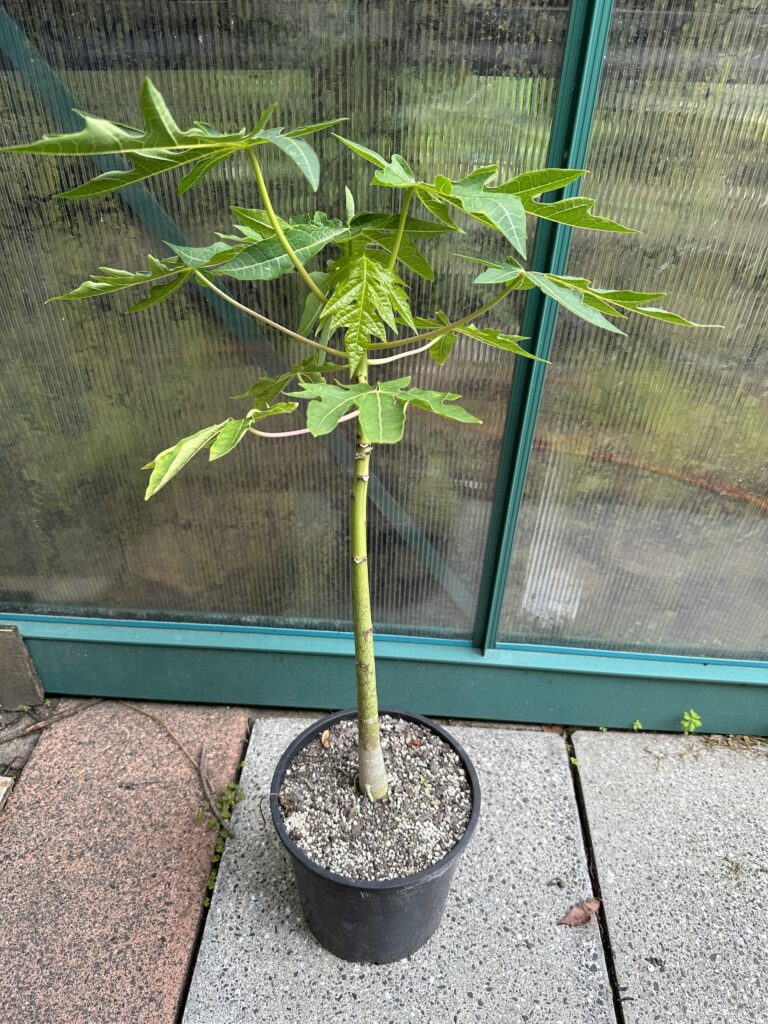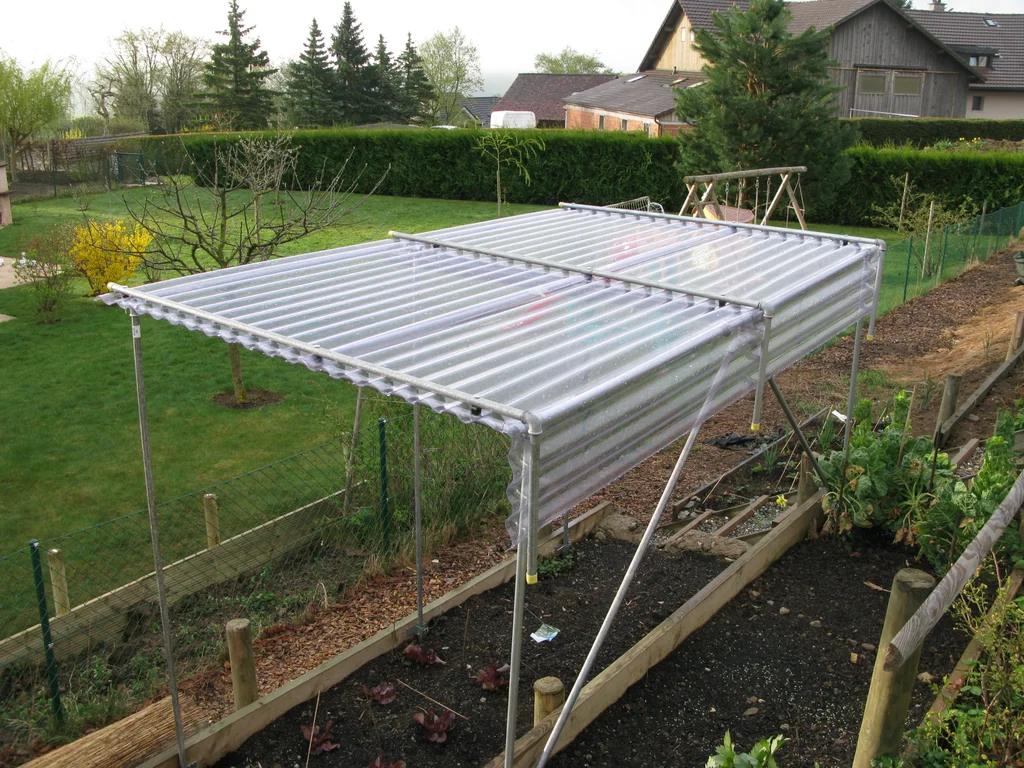Plants in New Zealand are capable of being highly productive and producing sweet, delicious fruits under the right conditions. They can be planted in the ground where drainage is perfect and there is full-sun, with no risk of frost. If perfect drainage or a frost-free environment cannot be provided, dwarf papayas are an excellent option to grow in a container. These low-bearing types can begin fruiting at as little as 60-70cm which makes them a great container grower — simply move the plant to shelter when winter begins, then back again in spring for fruit production.
Transplanting: Once the seedling has formed good roots in its current pot (you will usually see roots coming out the bottom) then you can gently transfer it to a larger container or plant it out if the season is right (Spring or Summer). Be sure not to upsize it too much, a larger container can stay wet too long potentially causing overwatering-related issues. Papaya love water but they should dry out moderately between watering.
Climate: In warmer areas of the North Island they may be planted outside if in a draining position and protected from frost. Places protected from the excess winter rain will do best as our rainy winters plus cold often kill them – they can usually survive the cold, but not cold and super wet conditions together. If your climate is not ideal or your soil does not drain very well then I would highly recommend growing in a pot/container. These varieties are low-bearing and are suited for this.
Pollination: The seeds we plant are especially from hermaphrodite fruit – this means, roughly, 66% should be hermaphrodite (both male and female on the same plant) and 33% should be female. Both are capable of holding fruit, but a female will not fruit on its own without a hermaphrodite nearby. For this reason, you should plant at least 2-3 trees (papaya of any variety, including mountain pawpaw and oak leaf, can cross-pollinate).
Container growing: The key to container growing is to not overwater, especially when you have just up potted it and the roots haven’t had a chance to settle in. Water only when the soil appears dry; you can try poking your finger in the soil if uncertain and if it feels too moist then leave it a day or two. A pot provides the opportunity for excellent drainage which can be provided by using a quality potting mix of personal preference. Slowly upsize your papaya as it grows, they can eventually fruit well in a 30 litre, 50 litre, or larger container. You can fertilise with what you would for a normal fruit tree – I personally use slow-release fertilisers available at most garden-related stores as these typically can feed the trees for 6 months at a time making it very easy.
How long does it take to fruit? Flowers should appear at approx. 70cm (about 9 months). The best fruit is usually developed during spring/summer. Winter fruits can often fall off prematurely or not reach a desired sweetness and are best used for salads while green.
Dwarf (low-bearing) varieties we grow:
Red Lady 786 F1: Our most popular variety. Deep red flesh, very sweet mild flavour. Flowers around 70cm. Reportedly slightly more cold tolerant than other types.
Tainung #2 F1: Produces long and narrow sweet, yellow-fleshed fruits. Thai origin, flowers around 70cm.
Hawaiian Solo Sunset: One of the sweetest, pink fleshed, small fruit. Flowers around 70-80cm.
Red Nemesis F1: Similar to Red Lady but has a stronger flavour and reportedly more disease resistance. Flowers around 70cm.
Waimanalo: Produces very small, extra sweet fruits with a deep-yellow flesh. Hawaiian origin, flowers around 70cm.
Flowers beginning to form on one of our Red Lady plants at just 60cm in height:


Below: basic example of a structure to prevent rot due to excess rain during winter, using cheap polycarbonate roofing panels and PVC pipe.




Hi would you have any Hawaiian solo sunset plants for $30 in dwarf? I saw your ad on tm and interested in 2 dwarf…whichever you have thankyou…Mischelle O’Donnell
Hello! Would you mind if I share your blog with my faceebook
group? There’s a lot of people thhat I think would really appreciate your content.
Please leet me know. Manny thanks https://waste-ndc.pro/community/profile/tressa79906983/
Hi, thank you! Sounds great.